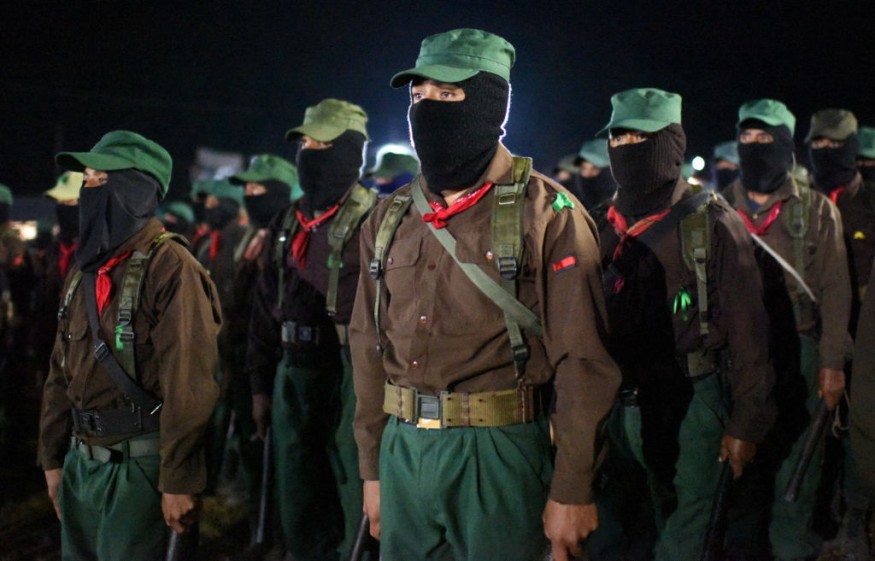Mexico: Zapatista Rebels Celebrate 30th Anniversary of Uprising as Drug Cartels Become Bigger Threat Than Them

The Zapatista Rebels, or the Zapatista Army for National Liberation, have been waging war in Southern Mexico against capitalism for over 30 years. However, as the group mark their 30th anniversary, the government has largely ignored them and have instead turned their attention more against drug cartels.
Known as EZLN, they were once the biggest threat to Mexico but have since been overshadowed by the drug cartels which have been indiscriminate in killing civilians, authorities, and rival gangs.
Hundreds of these Zapatista rebels gathered in the remote community of Dolores Hidalgo in the days before the 30th anniversary of their uprising in the southern regions of Mexico. It was marked by long speeches that called more to fight for their cause and continue their opposition to capitalism and globalism.
According to the Associated Press, around 1,500 young members of the Zapatista rebel group were present during that gathering, all donning their black balaclavas, green caps, and red kerchiefs, as they listened to one of their leaders, Subcommander Moises, deliver his speech.
"We're alone, like 30 years ago, because alone we have found the new path that we are going to follow," he told his fellow rebels and called for the group to "defend" themselves. We don't need to kill soldiers and bad governments, but if they come we're going to defend ourselves."
These days, the group has found itself fighting encroachment from the drug cartels which have used the state of Chiapas to traffic not just drugs, but illegal immigrants from Guatemala.
What is the Zapatista Rebel Group?
The armed rebellion by the Zapatista Army for National Liberation began in 1994 in the southern state of Chiapas, which remains the poorest state in all of Mexico. The rebel group declared war against the Mexican government in opposition to the North American Free Trade Agreement (NAFTA), with the group declaring their rebellion on the day Mexico's borders opened for free trade.
According to Reuters, the rebel group was named after Mexican revolutionary hero Emiliano Zapata and was led by Captain Insurgent Marcos, formerly known as Sub Commander Marcos, who made an appearance during the celebration.
During their rebellion, they sparked a bloody 12-day conflict with the federal government which left dozens dead. However, most who died were mostly Zapatistas. These days, the rebel group has remained in the mountains where they have their own autonomous health and education systems.
Zapatista Rebels and the Threat of Drug Cartels
The Zapatista rebellion is now contained mostly in the mountains and their fame has mostly faded, with many Mexicans thinking the group has already been disbanded. They still hold some territories, but recently, they have been encountering the threat that the Mexican government is treating more urgently than them, the drug cartels.
In November, the rebels announced that they had ended their autonomous civil systems and the indefinite closure of their cultural centers and denounced the "complete chaos" in Chiapas due to the threat of "disorganized crime."
According to France 24, the group has admitted suffering from "blockades, assaults, kidnappings, extortions, forced recruitment, shootings" from these criminal groups, which are the usual modus of the drug cartels. Currently, the Sinaloa and Jalisco New Generation cartels are fighting to control the region.
READ NEXT : Mexico Police Found Dismembered Body After Spotting a Dog Carrying Human Arm in Its Mouth
This article is owned by Latin Post.
Written by: Rick Martin
WATCH: The Zapatista Uprising (20 Years Later) - VICE NEWS
Subscribe to Latin Post!
Sign up for our free newsletter for the Latest coverage!
© 2025 Latin Post. All rights reserved. Do not reproduce without permission.















